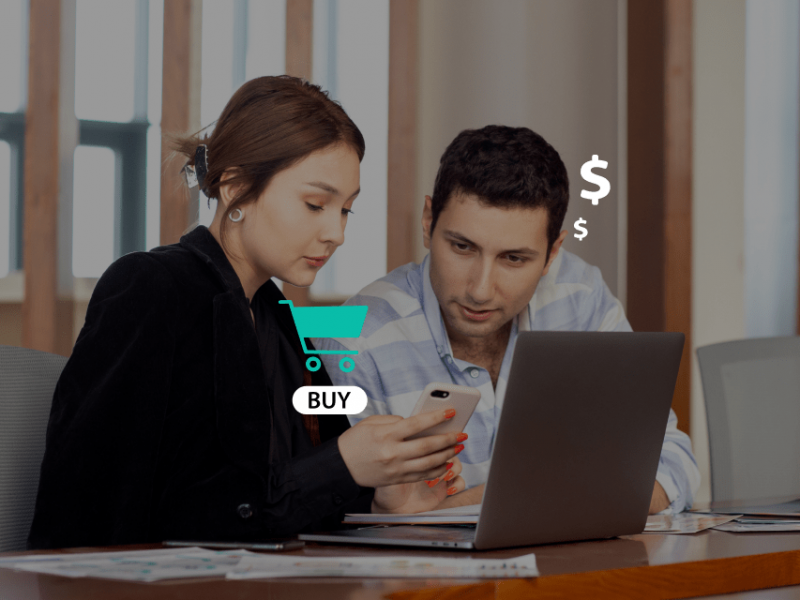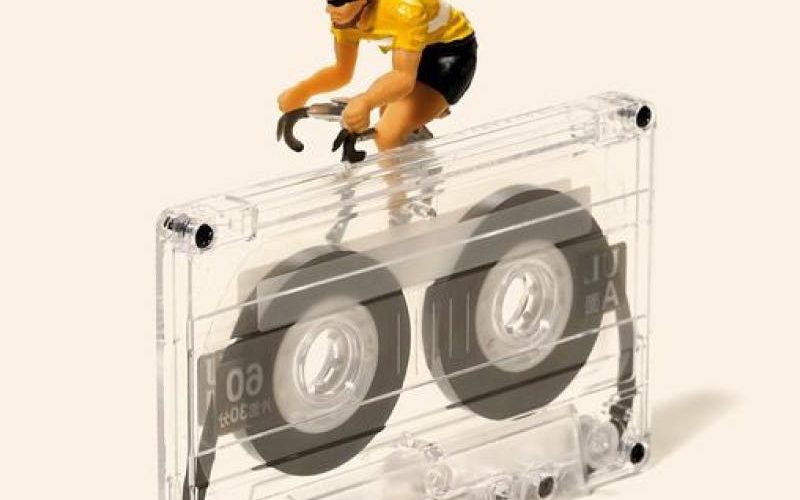Imagine if it were possible for customers to buy your product before it even existed!
For as much fun as you may have to nurture your latest brainchild to life – there is a cost. Specifically, time, money, energy and other valuable resources spent. Is it worth it?
Well, of course! But only if you know your brilliant idea isn’t going to end up on the wall of flops.
As crazy and futuristic as it sounds – it is doable. And the way to do it is through pre-sales. Product pre-sell can help you secure sales and reignite your customer base. It’s been around as long as the town crier has.
Pre-launching, on the other hand, is the next-generation tool every marketer should have in their belt. Making sure your “sure-fire” idea is actually fire!🔥
That’s why we’ve dedicated this article to:
- The differences between pre-selling and pre-launching
- The reasons why certain companies pre-sell
- Pre-selling vs Pre-launching
- How to do a Product Pre-Sell
This guide provides all the information you need to harness the power of pre-selling for your business. So let’s dive straight in…
What is Product Pre-Selling or Pre-Sale?
Imagine you’re a brilliant inventor, tinkering away in your workshop. You have this incredible idea, a gadget that revolutionizes how people make toast (let’s call it the “Toastmaster 5000”). But before you invest all your time and resources in building a mountain of them, wouldn’t it be nice to know if anyone actually wants one?
That’s the magic of pre-selling! It’s like whispering your invention’s secrets to a select group of excited friends. You show them sketches, describe its toast-tastic features, and offer a special pre-order discount for being early adopters.
Here’s the beauty:
- Early Buzz: You create a stir! People get excited and talk to their friends about this amazing toaster on the horizon. Word spreads, and anticipation builds.
- Funding Fiesta: Pre-selling can also raise some cash. People putting down deposits become mini-investors, helping you finance the creation of your toast-loving masterpiece.
Of course, there’s a bit of responsibility. You’re promising a product that doesn’t exist yet, so clear communication and timely delivery are key. But done right, product pre-sell can be a win-win. You get valuable feedback and funding, and eager customers get a hot deal on the coolest toaster this side of… well, the future!
(Sound good? Confused about the difference between pre-selling and pre-launching? Don’t worry. We’ll cover that in a separate section below.)
4 Reasons Why Companies Like Tesla and Apple Do Product Pre-Sell
Imagine you’re a tech giant like Tesla or Apple, ready to unveil your latest groundbreaking gadget. But before you unleash it on the world, wouldn’t it be wise to gauge the excitement level? Enter the strategic world of pre-selling, a method these tech titans have mastered to their advantage. Here’s why pre-selling is a launchpad for success:
1. Fundraising for Production
Let’s be honest, innovation can be expensive. Pre-selling acts as a crowdfunding mechanism. Companies like Tesla can use pre-order deposits to finance part of the production process. This reduces the upfront financial burden and allows them to scale up production based on actual demand, minimizing the risk of unsold inventory.
2. Planning Inventory
Pre-order numbers provide valuable insights into projected demand. This helps companies avoid overproducing or underproducing a product. Imagine Apple pre-selling a new iPhone. Based on pre-orders, they can estimate how many units to manufacture, ensuring enough iPhones for eager customers but not getting stuck with a warehouse full of unwanted devices.
3. Learning About Your Customers
Pre-orders are a treasure trove of customer data. You learn who your early adopters are, their demographics, and maybe even their preferences. This allows companies to tailor their marketing campaigns and potentially even refine features based on pre-order feedback.
4. Creating a Launch Buzz
Pre-selling creates a sense of anticipation. People who pre-order become invested, eagerly awaiting the product’s release. This buzz translates into free marketing – excited customers spread the word, generating excitement for launch day.
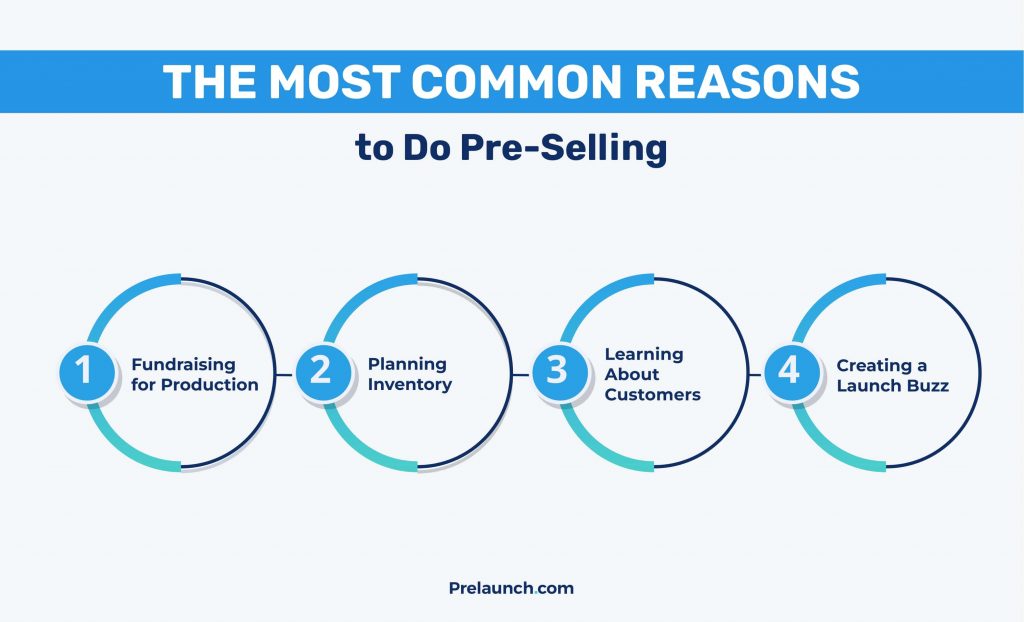
The Pre-Selling Powerhouse: A Win-Win for All
Pre-selling isn’t just about the company; it benefits the customer too. Early adopters get a chance to secure the hottest new gadget, often, at a discounted price. Plus, the hype generated by pre-orders creates a sense of exclusivity and community, making customers feel like they’re part of something special.
So, the next time you see a company offering pre-orders, understand it’s more than just creating a buzz. It’s a strategic move that validates ideas, identifies target markets, tests prices, and fuels production – all before the product even hits the shelves. It’s a win-win for both the innovative company and the eager early adopter.
Testaments of Success by Major Brands
One of the most notable pre-sale success stories is Tesla, which famously pre-sold both the Model 3 and the Cybertruck. In the case of the Model 3, Tesla received over 325,000 pre-orders within the first week of the pre-sale campaign, totaling about $14 billion in future sales, before the car had even been unveiled.
The company attributed the success of the pre-sale to a well-crafted marketing strategy that included targeted email campaigns, social media content, and live events. By positioning the Model 3 as a more affordable electric vehicle, Tesla was able to tap into pent-up demand for its products and the broader trend toward sustainability.
Apple is another company known for the success of its pre-sale campaigns. Before launching a new iPhone, for example, Apple typically holds a live event to announce the product and then opens up pre-orders immediately. The combination of a highly anticipated launch and a seamless pre-order process consistently results in record-breaking sales.
Pre-Selling vs Pre-Launching
Pre-selling and pre-launching are both tools in a marketer’s toolbox for building excitement and gauging interest in a new product or service, but there are some key differences between the two.
Check out the table below:
| Feature | Pre-selling | Pre-launching |
| Transaction | Customers pre-order and pay the full price upfront. | Customers pay a deposit (i.e, a discounted price of the product). |
| Product Stage | Usually happens closer to the launch date, with the product more solidified. | Can be done very early on, sometimes before the product is even finalized. |
| Goal | Generate interest, secure early sales, and create a buzz. | Gauge demand, raise funds for production, and build an audience. |
| Customer Relationship | Creates a more committed group of early adopters with “skin in the game.” | Builds a base of interested potential customers. |
Pre-selling is about generating interest and anticipation. Companies might announce a product’s coming arrival, share sneak peeks of features, or build an email list for updates. Customers pay in full. This is a way to get customers excited and on board before the official launch. It’s more like a “save the date” for product enthusiasts, especially for those already familiar with the brand.
Pre-launching is all about the transaction. You’re offering a chance to secure the product at a potential discount or with some bonus perk, often before it’s even fully manufactured.
In this case, the benefit to the buyer is that they secure the product and get priority. This is a commitment from the customer, with money changing hands upfront. Think of it as a “buy now, get later” scenario (n.b. This is the model used with crowdfunding.)
You might ask, but if there’s only a partial exchange of money, how can you rely on the data you gather? Are people actually willing to commit to my product?
Well, that’s a valid point. To address this issue and mitigate the risks, platforms like Prelaunch offer a solid middle ground, combining the best of both worlds of product pre-selling and pre-launching.
Prelaunch focuses on customers’ real purchase intent. Using the proprietary Prelaunch Reservation Funnel, visitors leave a small deposit to reserve future innovations. Taking out a credit card and making an online payment is the best indicator of real purchase intent ever. It makes a major difference! However, by the same token, it isn’t the full amount, and thus, customers feel safer making the reservation.
Through customer-centric product development, every innovative concept is validated and fine-tuned by the right audience, and only after it is made available for purchase. This helps
companies spend their resources on products that have higher potential, preventing them
from wasting money and time developing products nobody wants.
So why not just pre-sell?
Pre-selling can be risky for both parties. The company might not be able to deliver on its promises, and the customer might be waiting a long time for their purchase. (This is especially important if you’re not a super-huge brand like Apple.)
Pre-launching, on the other hand, carries less risk, but it also doesn’t secure any sales upfront. In other words, people could potentially pull the money they ‘backed’ your product with if they wanted to.
Ultimately, the best approach depends on the specific product or service and the company’s goals. For companies like Tesla, where pre-orders often come with deposits, product pre-sell can be a great way to validate demand, foster loyalty, and boost customer engagement.
For companies with a less established product line, pre-launching is probably a more secure alternative to better define their audience, what iteration of a product they are looking for, and how much they are willing to pay before a traditional product launch.
Why Pre-launching is the Safer Way to Go
Note that we said safer – not necessarily better. Pre-launching can be a particularly strong strategy for small and medium-sized brands (SMBs) compared to pre-selling, especially when it comes to minimizing risks and providing more informative data for future marketing decisions. Here’s why:
- Idea Validation: Let’s face it, developing a new product is a gamble. Pre-launching allows companies to test the waters with minimal risk. What do we mean by risk? Pre-launching is a process that takes place virtually and doesn’t require you to physically commit materials for manufacturing or actually take up shelf space in stores.
- Lower Psychological Barrier: Let’s face it: Forking over the full price for a new brand or product can be a daunting leap of faith for customers. Pre-launching allows them to engage with the product at a lower upfront cost, like a reservation fee or early-bird discount. This reduces the perceived risk and makes it easier for them to take that initial step towards becoming customers.
- Gauging Interest Effectively: Pre-launching is a fantastic tool for determining whether your product resonates with your target market. By building an email list or tracking website traffic during the pre-launch phase, you can gain valuable insights into potential customer interest. This allows you to refine your marketing strategy and product offering before a full-blown launch.
- Flexibility for SMBs: Unlike product pre-sell, which can lock you into production based on pre-order numbers, pre-launching offers more flexibility. The interest you gauge during the pre-launch phase can help you determine production quantities without overcommitting resources. This is especially crucial for SMBs who might not have the same economies of scale as larger companies.
Here’s an additional benefit to consider: During the pre-launch phase, you can collect valuable customer feedback through surveys and website interactions. This allows you to refine your product or service based on real user input, increasing the chances of success when you do finally launch.
So, while pre-selling can be a powerful tool, especially for established brands with a loyal customer base, pre-launching can be a safer and more effective strategy for SMBs looking to build trust, gauge interest, and ensure a smoother launch for their exciting new products.
How to do a Product Pre-Sell: Step-by-Step Guide
Now that we’ve covered the basics, let’s delve into how product pre-sell can be a pivotal step in validating your product idea, generating excitement, and securing early sales. Here’s a breakdown of the key steps to follow:
1. Create a Compelling Offer:
- Highlight the Benefits: People don’t buy products, they buy solutions to their problems. Clearly communicate how your product will make their lives better, solve a pain point, or fulfill a desire.
- Early Bird Pricing: Offer a discount or bonus incentive for pre-ordering. This creates a sense of urgency and exclusivity, motivating people to buy now.
- Limited Quantities: Scarcity can be a powerful motivator. Consider offering a limited number of pre-order slots to create a feeling of “missing out” and encourage early action.
2. Build Anticipation:
- Create a Landing Page: This is your pre-sale headquarters! It should showcase your product’s features, benefits, and pre-order details. Use high-quality visuals, clear calls to action, and a countdown timer to build excitement.
- Spread the Word: Leverage your existing marketing channels, such as social media, email marketing, and influencer outreach, to announce your pre-sale and generate buzz.
- Tease and Reveal: Don’t give everything away at once. Create a sense of mystery with sneak peeks, behind-the-scenes glimpses, and exclusive content for pre-sale registrants.
3. Launch a Pre-Sale Campaign:
- Set a Clear Timeline: Define the pre-sale start and end dates. This creates a sense of urgency and helps manage customer expectations.
- Offer Multiple Payment Options: Make it easy for people to pre-order a product by offering secure payment options like credit cards and popular online payment gateways.
- Clear Communication: Be transparent about delivery dates, product specifications, and any potential risks associated with the pre-sale (e.g., delays due to production).
4. Engage with Potential Customers:
- Respond to Inquiries: Actively answer questions and address concerns from potential customers. This builds trust and shows you’re invested in their experience.
- Host Live Events: Consider hosting live Q&A sessions or product demonstrations on social media to create a more interactive experience and generate excitement.
- Community Building: Encourage pre-order customers to connect with each other. This fosters a sense of community and excitement around the product launch.
5. Post-Sale Follow-Up:
- Thank You Message: Acknowledge and thank customers for their pre-orders. Let them know what to expect in terms of updates and delivery timelines.
- Keep Them Informed: Provide regular updates on the product development process and estimated delivery dates.
- Gather Feedback: After they receive the product, send a follow-up email or survey to gather valuable feedback. Use this to improve your product and future marketing efforts.
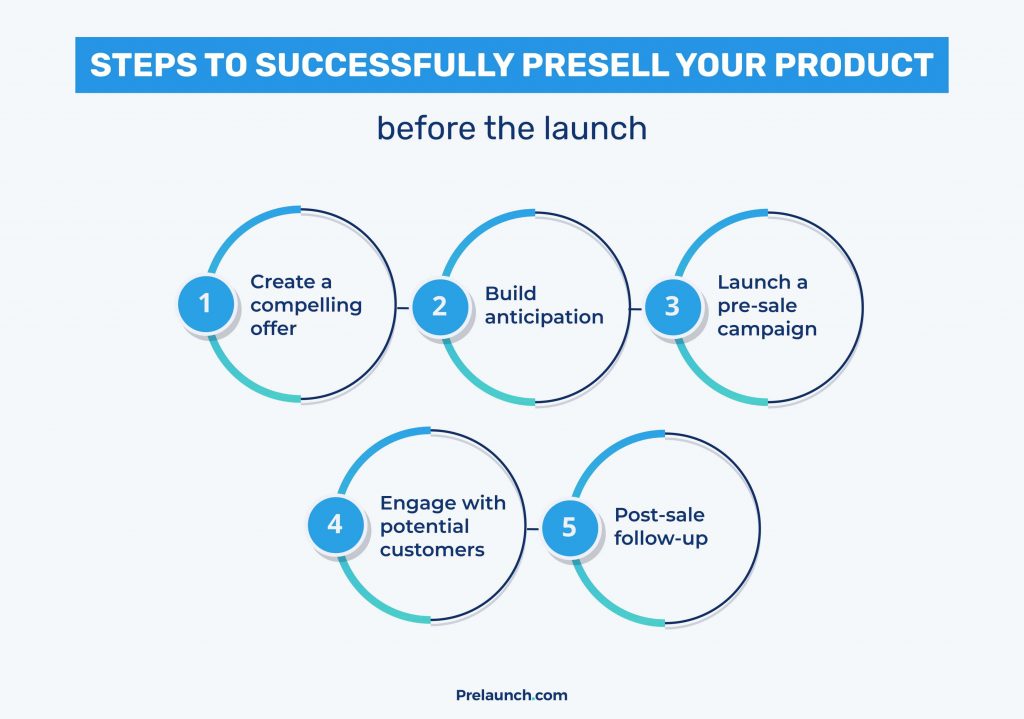
By following these steps and creating a well-planned pre-sale campaign, you can effectively generate interest, secure early sales, and set your product up for a successful launch. Remember, pre-selling is a two-way street. It’s about offering a compelling product while building trust and transparency with your potential customer base.
Product Pre-Sell Case Study: Flluid Electric Bikes
The wildly successful pre-launch of the Flluid 2 and Flluid 3 electric bikes saw crowdfunding goals exceeded and over $1.5 million raised on Indiegogo, demonstrating the power of innovative product design and effective campaign strategy. Following a strategic partnership with The Crowdfunding Formula in 2019, FUELL, founded by renowned motorcycle engineer Erik Buell, embarked on a determined mission to bring their dream e-bike to reality and redefine urban mobility.
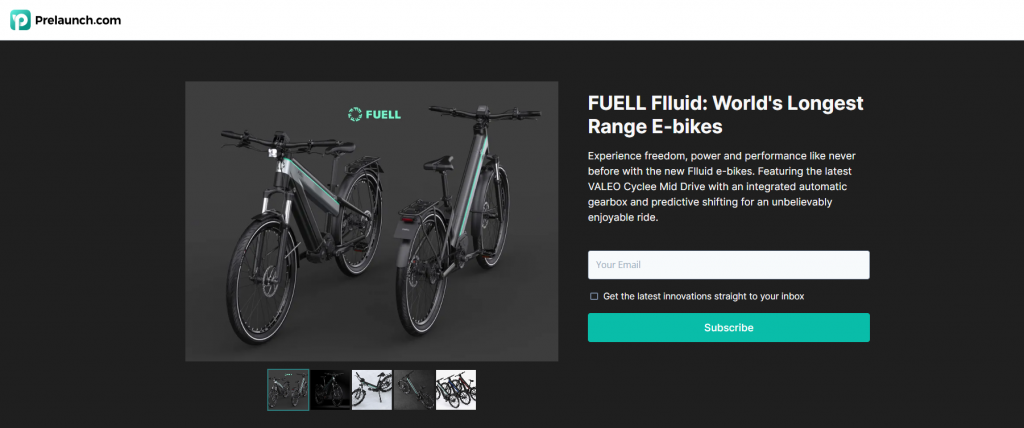
The pre-launch strategy relied on robust digital marketing, including a compelling landing page that showcased the unique value proposition of the Flluid 2 and 3 e-bikes. The campaign was amplified by a targeted social media presence, email marketing, collaborations with high-level news outlets, and third-party reviews, all of which built trust and generated buzz even before the official launch.
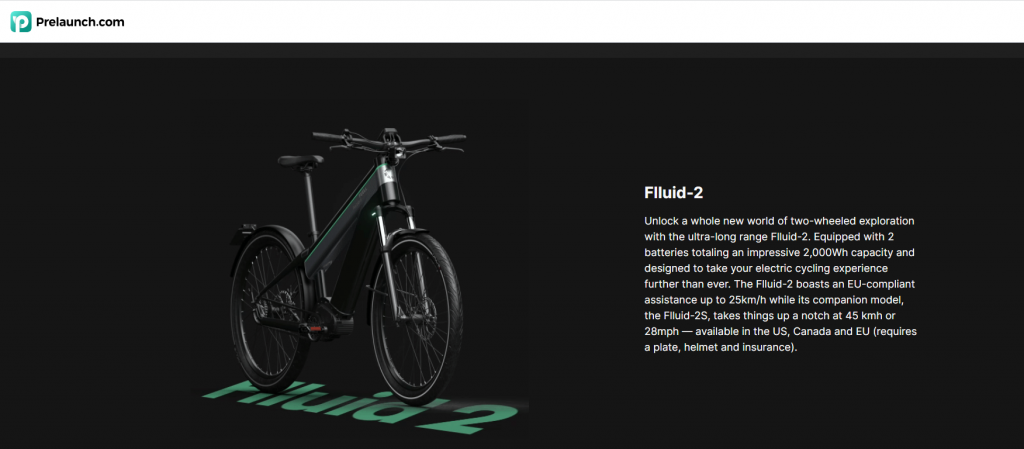
Allowing potential customers to test ride the Flluid e-bikes provided tangible proof of the product’s value, leading to anticipation and excitement. The success is a testament to the efficacy of these pre-launches and the potential for innovative products when paired with strategic marketing.
Wrap up
In conclusion, pre-selling a product can be a highly effective way to build your business and engage with customers before you’ve even launched. With careful planning and execution, a pre-sale strategy can lead to higher sales, increased customer loyalty, and invaluable product feedback.
If you’re looking for a more innovative and refined version of pre-selling, a prelaunch campaign is definitely the way to go. Whether you’re a tech startup, a consumer brand, or a service provider, both strategies aim to arm you with as much information as possible before you launch.
